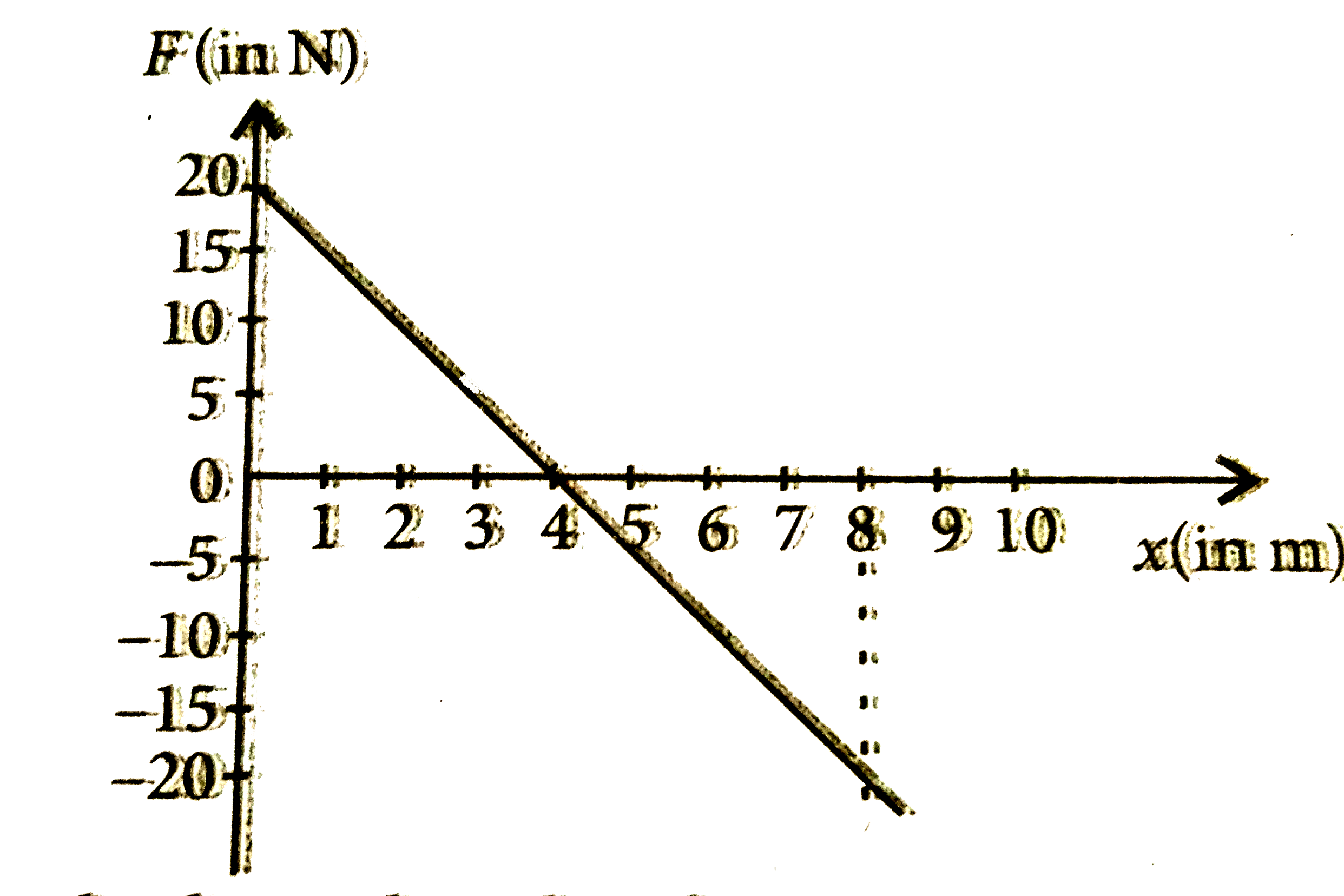A particle is moving along the x-axis and force acting on it is given by F=F0sinωxN, where ω is a constant. The work done by the force from x=0 to x=2 will be
F0ω(1−cosω)
F02ω(1−cos2ω)
2F0sin2ωω
F0ω(1+cos2ω)
The correct Answer is:C
W=∫x2x1Fdx=∫20F0sinωxdx
=F0|−cosωx|20ω=F0ω[(−cos2ω)−(−cos0)]
=F0ω(1−cos2ω)=F0ω[1−(1−2sin2ω)]
=2F0sin2ωω
Topper's Solved these Questions
Similar Questions
The velocity (v) of a particle of mass m moving along x-axis is given by v=α√x, where α is a constant. Find work done by force acting on particle during its motion from x=0 to x=2m :-
View SolutionThe velocity (v) of a pariticle of mass m moving along x-axls is given by v=b√x, where b is a constant. Find work done by the force acting on the particle during its motion from x=0 to x=4m.
View Solution
Knowledge Check
- Question 1 - Select One
A particle moving along the X-axis executes simple harmonic motion, then the force acting on it is given by
where, A and K are positive constants.A−AkxBAcoskxCAexp(−kx)DAkx - Question 2 - Select One
A particle moving along the x axis is acted upon by a single force F = F0e−kx , where F0 and k are constants. The particle is released from rest at x = 0. It will attain a maximum kinetic energy of :
AF0/kBF0/ekCkF0DkekF0 - Question 3 - Select One
A force F acting on an object varies with distance x

The work done by the force in moving the object from x=0 to x=8 m isAzeroB80 JC−40JD40J
A particle moving along the x- axis is subjected to a force given by F=F0(ex/a−1) where F0 and are constants Determine an expression for the work done by this force as the particle moves from the origin to the point x=r
View SolutionA force F=a+b x acts on a particle in the X-direction, where a and b are constants. Find the work done by this force during a displacement from x=0 to x=d/
View SolutionA force is given by F=kx2 where x is in meters and k=10N/m2 What is the work done by this force when it acts from x=0 to x=0.1m ?
View SolutionA particle of mass 2kg travels along a straight line with velocity v=a√x, where a is a constant. The work done by net force during the displacement of particle from x=0 to x=4m is
View SolutionThe position x of a particle moving along x - axis at time (t) is given by the equation t=√x+2, where x is in metres and t in seconds. Find the work done by the force in first four seconds
View Solution

